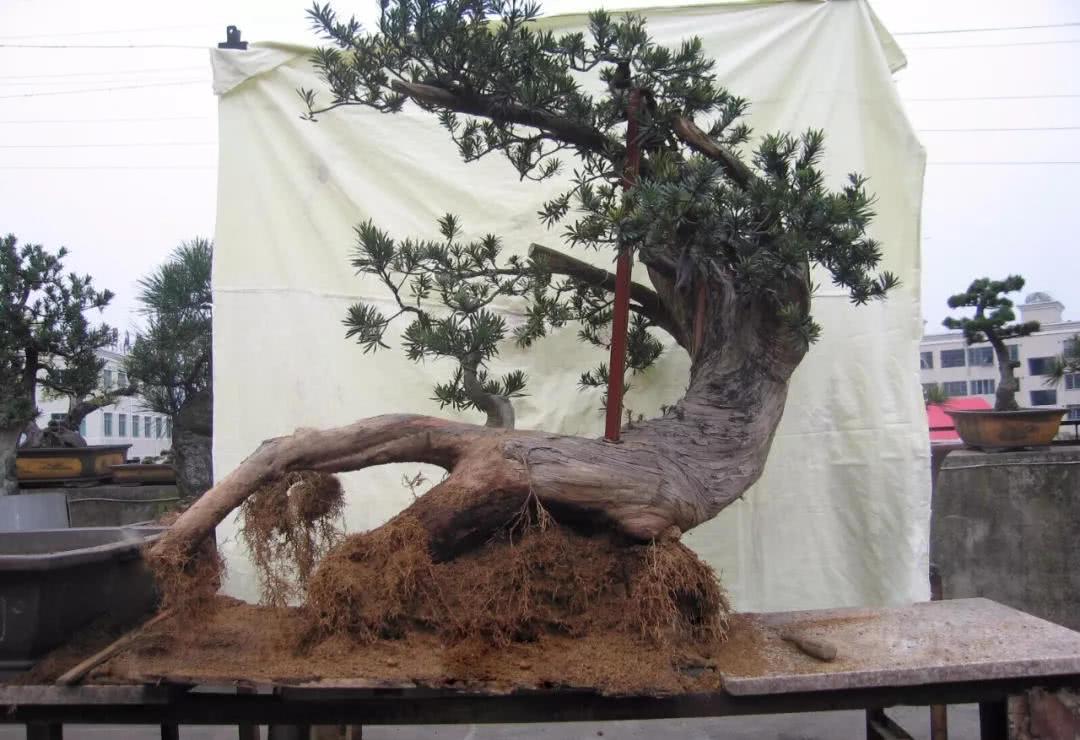You're snowing in the northern sun.

Spring is the world of flowers, which may be a common sentence used by many people to write essays in primary school. In fact, there are indeed many kinds of plants blooming in spring, not to mention the wild plants in the mountains, even in urban greening, the flowers in spring are dizzying, such as the Rosaceae family, which is blind every year. There are three sisters Yingchun, Forsythia suspensa and Golden Bell.
In many northern cities, in addition to flowering trees in spring, there is also a tree that can lose "caterpillars" and "snow"-Populus × tomentosa.
In spring, the cover is as tight as in winter. Picture: Oriental IC
Fear dominated by "caterpillars"
Populus tomentosa is one of the main street trees in northern cities of China. Every March, Populus tomentosa, which has been bald for a winter, begins to drop reddish-brown "caterpillars" to the ground. As a naughty boy when I was young, my favorite thing to do was to pick up such "caterpillars" and throw them at the girls and harvest their screams. Of course, this is just a clumsy way for little boys to attract the attention of little girls, and it is not worth learning.
These non-dangerous "caterpillars" are actually the dry and fallen male inflorescences on the male plant of Populus tomentosa, which are part of the plant and have nothing to do with animals.
The male inflorescence of Populus tomentosa is spreading powder. Picture: do not know plants
Populus tomentosa has a dioecious breeding system. The male plant has only male flowers, and the male flowers without perianth form a catkin [t í] inflorescence. The red anthers crack when they mature and spread the pollen in the wind. On the other hand, the female plant has only female flowers and forms a catkin without perianth, with the stigma of each female flower bifid and sticking out into the air in order to get pollen from the wind.
The two male flowers of Populus tomentosa can be seen with red anthers and bracts with long hairs and no perianth. Picture: do not know plants
After pollination, the catkin of the male plant no longer has any effect, and then dries up and falls, while the catkin of the female plant begins to enter the fruit development stage after pollination, the inflorescence axis elongates, the female flower ovary expands, the stigma shrinks, the fruit cracks after ripening, and spreads the seeds.
After pollination, the fruit development stage, the ovary began to expand, and the inflorescence axis began to elongate. Picture: do not know plants
The seeds of Populus tomentosa are tiny, bearing woolly appendages that float in the wind and carry the seeds far away. Because of the existence of woolly hair, there will be a scene of "flying snow" every time the seeds are scattered, which is very spectacular.
The yellow ones in the picture are the seeds of P. purdomii, which are very rich in woolly hair, helping to spread the seeds with the wind. Picture: do not know plants
"Snow" is everyone's nightmare
The trunk of Populus tomentosa is straight, up to 30 meters high. As the tree grows older, the bark changes from dark gray to grayish green, and finally to grayish white, while the base of the trunk turns black when it is old.
The gray-green bark shows that the age of this Chinese white poplar planted in urban greening is not too old. Picture: do not know plants
The propagation technology of Populus tomentosa is less difficult, and sowing, cutting or grafting can be used for seedling cultivation and afforestation. Populus tomentosa, as a fast-growing tree, can grow in 20 years under sufficient water and fertilizer conditions, and its growth adaptability is very strong, such as clay, loam, sandy soil and even slightly saline-alkalized soil.
Because of these excellent characters, Populus tomentosa occupies the main position of street trees in many cities in the north, and it also brings happiness to many people's childhood, such as me.
A tree of "caterpillars" is about to fall, I do not know how many people can scare. Picture: do not know plants
However, because Populus tomentosa is wind-pollinated, the pollen floating in the wind can cause allergic pain to many people at the flowering stage. For people who can't leave their allergens for a variety of reasons, a mask is the most important way to prevent pollen allergies. The flying catkins have also brought great trouble to the maintenance of urban hygiene.
The riddle of the Life of Populus tomentosa
Populus tomentosa is a member of the genus Populus of Salicaceae. There are about 100 species of Poplar in the world and 71 species in China, of which 47 species are endemic and at least 10 species are hybrids.
There is still some confusion in the study of systematic taxonomy of Populus. This is because interspecific hybridization within the genus Populus occurs from time to time, there are a large number of natural hybrid individuals, and these individuals form a more complex hybrid relationship with other species. In order to better complete the research, researchers are taking a deeper look at the wild population, collecting more samples and integrating more research methods.
The multiplicative sign in the middle of the scientific name of Populus tomentosa indicates that it is not an independent species, but one of the 10 natural hybrids. When people first published Populus tomentosa, they did not know its natural hybrid identity, so there was no multiplication sign in the scientific name at that time. With the deepening of the research, researchers found that Populus tomentosa was related to more than one other species of Populus, so they speculated that it should be a hybrid, and then carried out the search for the parent species of Populus tomentosa.
In the early stage, it was suggested that the bract morphology of Populus tomentosa was very similar to that of P. canescens, and it was speculated that Populus tomentosa may be the hybrid progeny of P. tremula. Later, some people speculated that Populus tomentosa (P. davidiana) and Xinjiang Poplar (P. albavar.pyramidalis) were involved in the formation of Populus tomentosa, while others thought that Populus tomentosa was the offspring of natural hybridization between P. alba and P. adenopoda.
So far, more than a dozen routes of hybrid origin of Populus tomentosa have been published, but there is still a lot of way to go before the mystery of the life history of Populus tomentosa is finally revealed. At present, the evidence of molecular systematics shows that Populus tomentosa is the most likely provider of female parent during the formation of Populus tomentosa, while other poplars provide pollen (male parent) in the process of hybridization. The specific hybridization process still needs further research to reveal, in short, it is a very complex process.
Do you still know the word "Yang"? Picture: Georges Seguin & AnRo0002 & Daniel Dumais / wikmedia
In recent years, the problem of air pollution (haze, etc.) is more prominent. Populus tomentosa, as the main force of the street tree, has once again been found by researchers to absorb PM2.5 particles through its leaves. Although according to the data, Populus tomentosa can not become the main force to prevent fog and reduce haze, it still brings us new ideas for research.
Populus tomentosa has become a common native plant in the wild in North China because of its own advantages. at the same time, it also occupies the space of human settlements, and brings a lot of research directions to researchers. From the population and genetic level, Populus tomentosa is not under the pressure of survival.
But we should not forget that the survival of a species is inseparable from the environment in which it lives. Only when the environment is well protected, can the various species living in it be effectively protected, including human beings themselves.
This article is the 249th article in the fourth year of the species Calendar, from the author of the species Calendar @ does not know plants.
Wonderful content that you may miss
Calendar Niang today's avatar
Saliuraceae weeping willow
- Prev

There is a long queue of people who want to buy a hundred-year-old Luohan pine after more than ten years of transformation.
A hundred-year-old Luohan pine, after more than ten years of transformation, people who want to buy it are waiting in a long line to raise a basin of fine bonsai for more than a decade.
- Next

Cheer for succulent mania and post-80s boys all his life.
Today, let's talk about Ermu, Ermu succulent boss is an Internet celebrity, belongs to a very crazy person, many people like him, especially ladies, why? I think he is a succulent maniac all his life, who can be called a madman in horticulture.
Related
- Wuhan Hospital Iron Tree Blooming Result Was Instantly Frightened by the Gardener Master
- Which variety of camellia is the most fragrant and best? Which one do you like best?
- What is the small blue coat, the breeding methods and matters needing attention of the succulent plant
- Dormancy time and maintenance management of succulent plants during dormancy
- Minas succulent how to raise, Minas succulent plant pictures
- What are the varieties of winter succulent plants
- How to raise succulent plants in twelve rolls? let's take a look at some experience of breeding twelve rolls.
- Attention should be paid to water control for succulent plants during dormant period (winter and summer)
- Watering experience of twelve rolls of succulent plants
- Techniques for fertilizing succulent plants. An article will let you know how to fertilize succulent plants.

